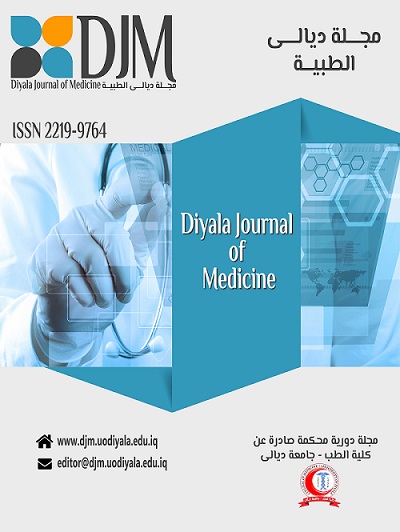Abstract
Background: As an alternative to back surgeries, endoscopic spinal operations is the most
effective and safe procedure that does not impose the fear reaction to the patients.
Objective: In this study the results, complications, and outcomes of 60 patients complaining
from prolapsed lumbar inter-vertebral discs who experienced prolapsed endoscopic lumbar
discectomy (PELD) were reported.
Patients and Methods: This is a prospective study conducted in three sentinel hospitals over
a period of 3 years (2013-2015) in Erbil city of Iraq. Clinical findings in addition to pre-
operative MRI were the main diagnostic methods used for including patients who were
suffering from lumbar disc herniation at different levels. Clinical appraisal was done utilizing
the modified Macnab criteria. The Storz lens spinoscope was utilized to perform PELD.
Results: Sixty patients (37 males and 23 females) with lumbar disc herniation were included in
the study. The mean operative time was 50 minutes. Patients were discharged during 1st 24
hours post-operatively. After surgery, patients were followed up for two months to three years
with a mean of 18 months. Seven (11.7%) patients developed complications including one
(1.7%) instance of shallow nerve injury, three (5%) with dural tears, two (3.3%) instances of
intermittent delayed disc prolapse and one patient (1.7%) had post-operative discitis. Modified
Macnab criteria (excluding patients with long dural tear) showed excellence results for 36
patients, while good results were observed for 17 patients, reasonable results for 3 patients and
poor results for 2 patients. The achievement rate was 91.4% .
Conclusion:Although endoscopic spinal discectomy is a compelling procedure for
management of lumbar disc prolapse, and although its final outcome is reasonable it is not
devoid from complications.
effective and safe procedure that does not impose the fear reaction to the patients.
Objective: In this study the results, complications, and outcomes of 60 patients complaining
from prolapsed lumbar inter-vertebral discs who experienced prolapsed endoscopic lumbar
discectomy (PELD) were reported.
Patients and Methods: This is a prospective study conducted in three sentinel hospitals over
a period of 3 years (2013-2015) in Erbil city of Iraq. Clinical findings in addition to pre-
operative MRI were the main diagnostic methods used for including patients who were
suffering from lumbar disc herniation at different levels. Clinical appraisal was done utilizing
the modified Macnab criteria. The Storz lens spinoscope was utilized to perform PELD.
Results: Sixty patients (37 males and 23 females) with lumbar disc herniation were included in
the study. The mean operative time was 50 minutes. Patients were discharged during 1st 24
hours post-operatively. After surgery, patients were followed up for two months to three years
with a mean of 18 months. Seven (11.7%) patients developed complications including one
(1.7%) instance of shallow nerve injury, three (5%) with dural tears, two (3.3%) instances of
intermittent delayed disc prolapse and one patient (1.7%) had post-operative discitis. Modified
Macnab criteria (excluding patients with long dural tear) showed excellence results for 36
patients, while good results were observed for 17 patients, reasonable results for 3 patients and
poor results for 2 patients. The achievement rate was 91.4% .
Conclusion:Although endoscopic spinal discectomy is a compelling procedure for
management of lumbar disc prolapse, and although its final outcome is reasonable it is not
devoid from complications.
Keywords
Endoscopic lumbar discectomy
Endoscopic spine surgery
Lumbar disc surgery
Prolapsed lumbar disc
Storz lens spinoscope.
Keywords
هبوط القرص القطني، جراحة القرص القطني، جراحة
